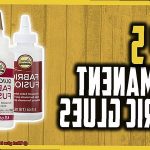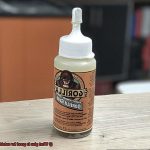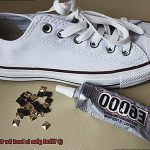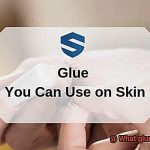When it comes to upholstery, finding the perfect glue is like discovering a hidden gem that will bring your project to life. It’s the secret ingredient that holds everything together, ensuring your cushions stay plump and your fabric stays flawlessly in place. But with so many adhesive options out there, it can feel like navigating a labyrinth of sticky choices. Fear not. This blog post is here to be your trusty guide, shedding light on the best glues for upholstery and helping you avoid any sticky situations along the way.
Picture this: you’re sitting on your favorite armchair, cozy as can be, when suddenly you notice a tear in the fabric. Panic sets in as you imagine the unraveling of all your upholstered dreams. But fear not. With the right adhesive by your side, you can repair that tear and restore your beloved chair to its former glory.
So what makes a glue worthy of being crowned the king (or queen) of upholstery? Well, it all boils down to three key factors: drying time, flexibility, and ease of application. These little details might seem insignificant at first glance, but they can make or break your upholstery project.
Imagine this scenario: you’ve painstakingly reupholstered an entire sofa, only to realize that the glue you used takes ages to dry. Cue frustration and impatience as you wait for what feels like an eternity for those cushions to become touchable again. That’s why considering drying time is crucial – nobody wants to sit on a half-dry couch.
Flexibility is another important aspect to keep in mind when choosing an adhesive for upholstery. After all, furniture isn’t meant to just sit there looking pretty; it needs to withstand everyday use and movement without falling apart at the seams (literally.). So opt for a glue that can handle some bending and stretching without losing its grip.
Last but not least is ease of application because let’s face it, nobody wants to spend hours wrestling with a tube of glue. Look for an adhesive that is user-friendly and easy to work with, saving you time and frustration.
In this comprehensive guide, we’ll delve into the world of upholstery glues and explore popular options such as fabric glue, spray adhesive, and hot glue. We’ll break down their pros and cons, discuss their ideal uses, and provide you with all the information you need to make an informed decision.
So, grab a cup of coffee (or your beverage of choice), get comfortable, and let’s embark on this
What is Upholstery Glue?
Contents
Upholstery glue is a specially formulated adhesive that is designed to bond fabric, foam, and other materials used in upholstery projects. It is an essential tool for any upholstery project, whether you are repairing a piece of furniture or creating something new. Upholstery glue comes in various forms, including contact adhesive, fabric glue, and hot melt glue sticks.
Contact adhesive is a popular type of upholstery glue that creates an instant bond and provides excellent strength. It is applied to both surfaces that need to be bonded together and allowed to dry before pressing the two surfaces firmly together. This type of glue is ideal for upholstery projects because it ensures a strong and durable hold.
Fabric glue is another type of upholstery glue specifically formulated to bond fabric materials together without damaging or discoloring them. It is often used for small repairs or attaching embellishments to upholstery items. Fabric glue usually dries clear and flexible, preserving the natural look and feel of the fabric.
Hot melt glue sticks are commonly used in upholstery projects as well. These glue sticks are heated up in a hot melt glue gun, melting them into a liquid state that can be easily applied to materials. Hot melt glue sets quickly and provides a strong bond, but it may not be suitable for all types of upholstery fabrics as the high temperature can cause damage or discoloration.
When choosing upholstery glue, it is important to consider the specific needs of your project. Factors such as the type of materials being bonded, the desired strength of the bond, and the application method should all be taken into account. Reading product labels and instructions carefully will ensure that the chosen glue is compatible with your upholstery materials.
To use upholstery glue effectively, it is important to clean and prepare the surfaces that will be bonded, apply the glue evenly, press the surfaces firmly together, and allow sufficient drying time as recommended by the manufacturer. Testing the glue on a small area before applying it to the entire project is also a good idea to prevent any potential damage.
Types of Upholstery Glue
With a myriad of upholstery glue options available, it can be overwhelming to determine which one suits your specific requirements. In this comprehensive guide, we will delve into the different types of upholstery glue and their applications, empowering you to make an informed decision.
Contact Adhesive:
Contact adhesive reigns supreme as the go-to choice for securing substantial fabric areas to furniture or other surfaces. Renowned for its robust and permanent bond, contact adhesive is ideal for projects necessitating durability. The application process involves coating both the fabric and the surface being upholstered, allowing them to dry before pressing them together. This adhesive excels in creating long-lasting bonds capable of withstanding everyday wear and tear.
Fabric Glue:
Designed specifically for bonding fabric to fabric, fabric glue offers unparalleled versatility in upholstery projects. This water-based adhesive dries transparently and flexibly, rendering it nearly invisible on most fabrics. It works wonders with delicate fabrics or projects requiring a more flexible bond, such as repairing tears or attaching decorative elements.
Epoxy Adhesive:
For upholstery projects subjected to high temperatures or exposure to harsh cleaning agents, epoxy adhesive emerges as the ultimate solution. Notorious for its formidable and enduring bond, epoxy adhesive also boasts heat and chemical resistance. Mixing two parts creates a bond that stands the test of time, albeit at the expense of longer drying time compared to other glue types.
Spray Adhesive:
When temporary bonds or easy removal are prerequisites, spray adhesive emerges as a suitable option. Its even application over large areas makes it perfect for creating removable seat cushions or slipcovers. However, bear in mind that spray adhesive may not provide as sturdy a bond as other glues, rendering it unsuitable for certain upholstery projects.
Hot Glue:
For quick repairs or attaching small embellishments, hot glue remains a favored choice. Applied using a hot glue gun, this adhesive offers rapid bonding. Nonetheless, it may not be compatible with all fabric types, as it can harden and become brittle over time.
Fabric Glue
Fabric glue has become a go-to adhesive for upholstery projects, and it’s easy to see why. Its versatility, convenience, and bond strength make it a top choice for both DIY enthusiasts and professionals.
Firstly, fabric glue is incredibly versatile. It can be used on a wide range of fabrics, including delicate silk, durable leather, and everything in between. This makes it perfect for upholstery projects that involve different types of fabric materials. No matter the material, fabric glue provides a strong and durable bond.
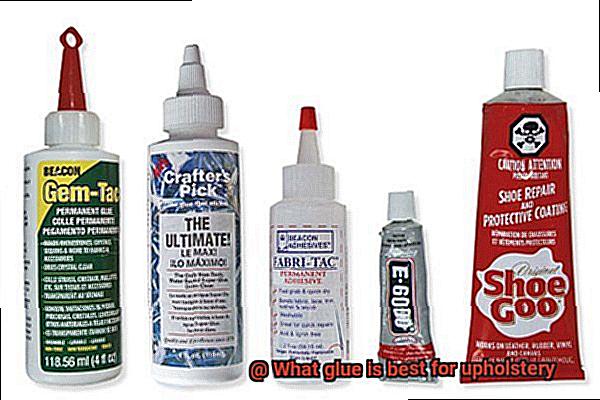
Secondly, fabric glue is a convenient alternative to traditional sewing methods. Say goodbye to needles and thread. With fabric glue, you simply apply the adhesive to the fabric and press it firmly onto the surface you’re upholstering. This saves you time and effort, making upholstery projects quicker and easier.
Next, fabric glue offers a strong bond between fabrics. However, it’s important to choose the right type of fabric glue for your specific needs. Water-based adhesives are suitable for most upholstery projects and provide a solid bond. If you’re working on heavy-duty upholstery or outdoor furniture exposed to moisture, solvent-based adhesives offer an even stronger bond.
Fabric glue also dries clear, ensuring a clean application without any visible residue or marks on the fabric surface. This is particularly important when working with light-colored or transparent fabrics.
Furthermore, many fabric glues are washable, meaning they can withstand machine washing without compromising the bond between fabrics. This is especially beneficial for upholstery projects that require regular cleaning.
To achieve the best results with fabric glue, it’s important to follow the manufacturer’s instructions carefully. Test the glue on a small, inconspicuous area of your upholstery project before applying it to the entire surface to ensure compatibility with your fabric.
Contact Cement
Contact cement is an indispensable adhesive for achieving seamless and durable finishes in upholstery projects. This versatile glue has gained popularity in the upholstery world due to its remarkable bonding capabilities and quick-drying properties.
So, what exactly is contact cement? It is a solvent-based adhesive that is applied to both surfaces being bonded. Once the adhesive dries, the surfaces are pressed together to create an incredibly strong bond. This adhesive is particularly useful for bonding different materials together, such as fabric to wood or foam to metal, making it an essential tool for upholstery projects.
One of the greatest advantages of using contact cement for upholstery is its ability to create a robust and long-lasting bond. Upholstery projects often face stress and movement, but contact cement can withstand these challenges, ensuring that your finished piece will stand the test of time. Additionally, contact cement has a quick drying time, allowing you to efficiently complete your upholstery work without waiting around for hours.
However, it’s important to note some considerations when working with contact cement. Firstly, proper ventilation is crucial during application due to its strong odor and potential health hazards associated with the solvent-based formula. Working in a well-ventilated area or wearing a mask is recommended to protect yourself from any fumes.
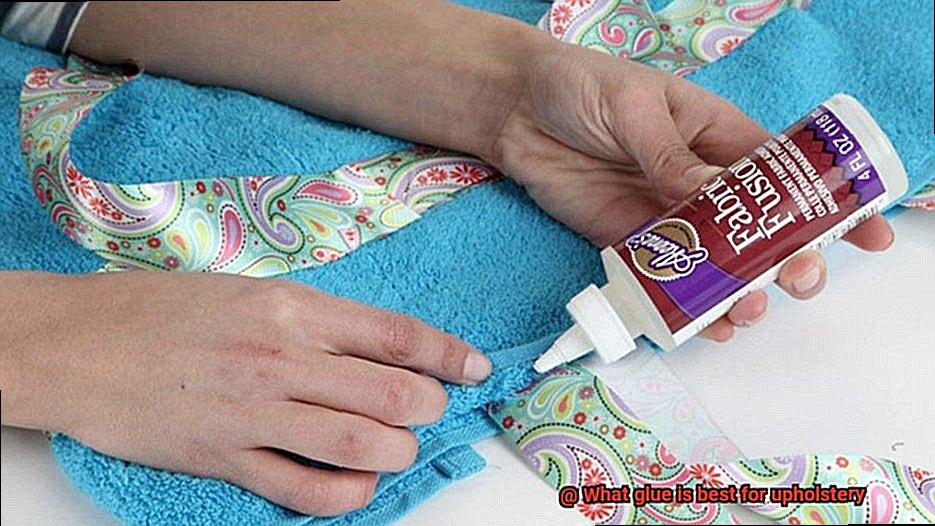
To achieve optimal results with contact cement for upholstery, it’s essential to apply an even and thin layer of adhesive on both surfaces. This ensures a secure bond without any lumps or bumps in your finished project. It’s also advisable to let the adhesive dry for a few minutes before joining the surfaces together, as this allows the contact cement to reach its maximum bonding strength.
Choosing a high-quality contact cement specifically designed for upholstery applications is paramount. Some popular brands include 3M Super 77 Multipurpose Adhesive, DAP Weldwood Original Contact Cement, and Barge All-Purpose Cement. These adhesives have been specially formulated to provide optimal results in upholstery projects.
Epoxy Adhesive
Epoxy adhesive is a powerful and versatile glue that is widely used in upholstery projects. With its exceptional bonding capabilities, epoxy adhesive is the go-to choice for upholsterers looking to secure various materials together.
One of the standout features of epoxy adhesive is its ability to bond different types of materials commonly found in upholstery projects. Whether you’re working with fabric, leather, foam, or wood, epoxy adhesive can create a strong and durable bond, ensuring your upholstery stays intact for years to come.
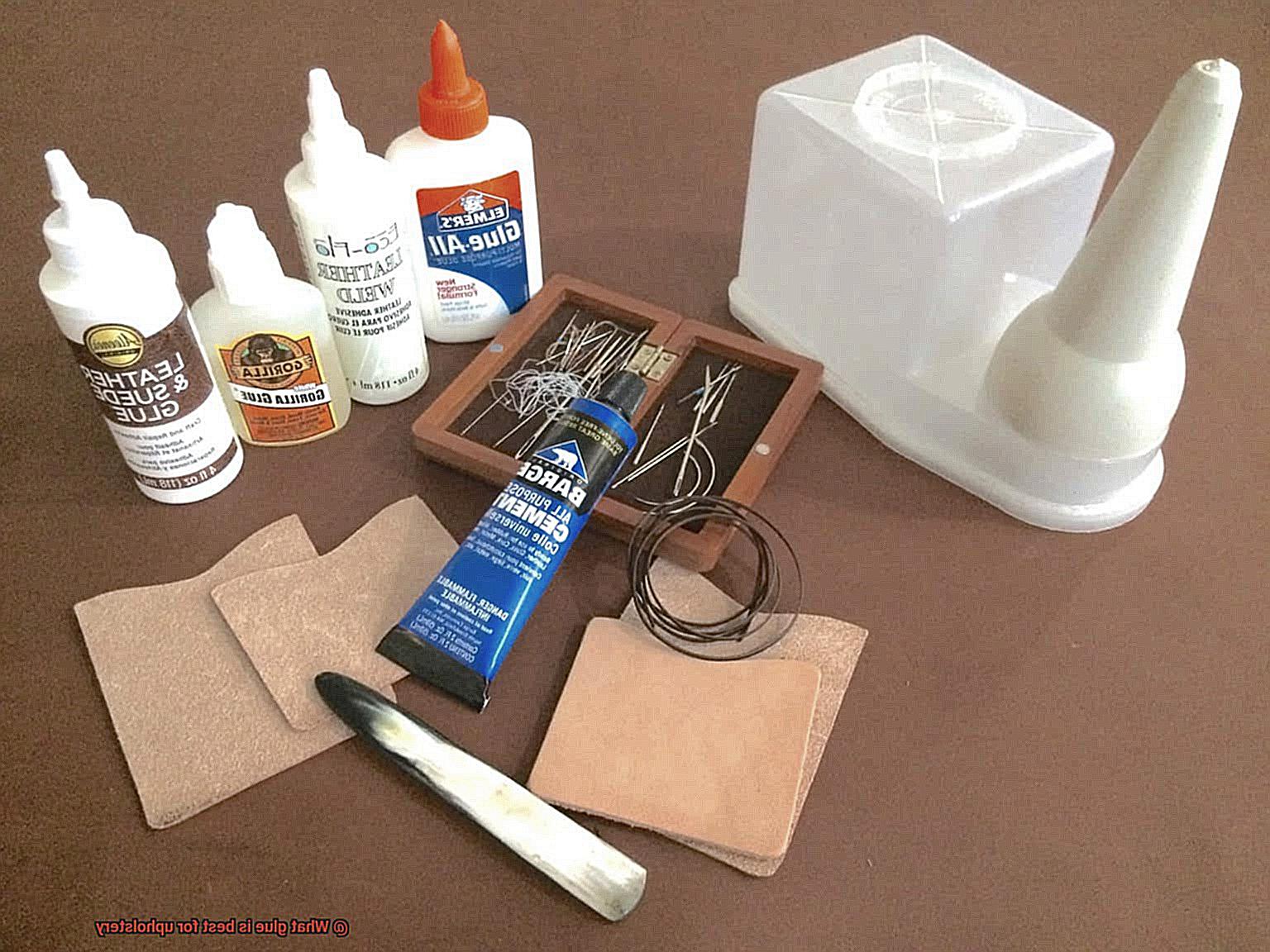
Durability is another key advantage of epoxy adhesive. Upholstered furniture often faces spills, humidity, and temperature changes. Luckily, epoxy adhesive is up to the challenge. It is resistant to moisture and can withstand high temperatures without losing its strength. So even if disaster strikes and your upholstery gets soaked or exposed to extreme heat, you can have peace of mind knowing that your bond will hold strong.
In addition to its bonding strength, epoxy adhesive also excels at filling in gaps and uneven surfaces. Say goodbye to unsightly imperfections in your upholstery projects. With epoxy adhesive, those annoying little gaps are seamlessly filled, resulting in a professional finish.
To ensure optimal results, it’s crucial to follow the manufacturer’s instructions when using epoxy adhesive. Achieving the correct mixing ratio of resin and hardener is essential for proper curing and maximum bonding strength. Apply the adhesive evenly and allow sufficient time for curing before subjecting your bonded materials to stress.
Spray Adhesive
Prepare to revolutionize your DIY game with the ultimate secret weapon: spray adhesive. This super-powered glue is an essential tool for bonding fabrics, foam, and other materials together, making it a must-have in your upholstery arsenal. Let’s dive into the advantages of using spray adhesive and discover why it should be your go-to choice for all your upholstery projects.
Advantage #1: Unbeatable Strength and Durability
When it comes to upholstery, you need a glue that can withstand the demands of everyday use. Spray adhesive is designed to create a strong and durable bond between materials, ensuring that your upholstery stays intact even with regular wear and tear. Say goodbye to worries about seams coming undone or fabrics slipping out of place – spray adhesive has got you covered.
Advantage #2: Lightning-Fast Drying Time
We all know the frustration of waiting for glue to dry before moving forward with our projects. But with spray adhesive, that frustration becomes a thing of the past. Unlike other glues that take hours or even days to fully set, spray adhesive dries within minutes. This means you can complete your upholstery projects in record time without compromising quality or durability.
Advantage #3: Precision and Coverage like a Pro
Have you ever struggled to achieve an even distribution of glue across your project? Bid farewell to those struggles with spray adhesive. The fine mist that sprays out of the nozzle ensures precise coverage, allowing for seamless bonding between materials. Whether you’re working on intricate upholstery details or larger surfaces, spray adhesive gives you the control and accuracy needed for professional-quality results.
But wait, there’s more. Not all spray adhesives are created equal. Different types are available for specific upholstery applications, such as fabric-to-fabric bonding or attaching fabric to foam. So make sure you choose the right spray adhesive for your project to maximize its effectiveness.
Choosing the Right Glue for Your Project
When it comes to upholstery projects, selecting the right glue is crucial for ensuring a durable and professional finish. The wrong choice can result in weak adhesion, causing fabric to come loose or seams to unravel over time. To avoid this, it’s important to understand the different types of glues available and their suitability for upholstery.
One popular option for upholstery projects is fabric glue. Designed specifically for bonding fabric to fabric or fabric to other materials, fabric glue provides a strong and flexible bond. It is ideal for projects where there may be movement or stretching of the fabric. Fabric glue typically comes in liquid form and can be applied using a brush or nozzle. Look for a fabric glue that dries clear and remains flexible after drying.
Another adhesive option is contact adhesive, which forms an instant bond when two surfaces are pressed together. Contact adhesive is commonly used for bonding non-porous materials such as leather, vinyl, or plastic. It is available in tube or canister form and requires application on both surfaces being bonded. Once the glue is dry to the touch, the two surfaces can be pressed together, creating a strong and durable bond.
For larger areas or irregular shapes, spray adhesive may be the right choice. Spray adhesives are easy to use and provide quick and even coverage. However, it’s important to choose a spray adhesive specifically designed for fabric or upholstery applications. These adhesives are formulated to provide a strong bond while remaining flexible and resistant to heat and moisture.
When selecting the right glue for your upholstery project, consider the materials you’ll be working with, the application method, drying time, and intended use of the upholstered item. Ensure that the chosen glue is compatible with the materials you’re using to achieve optimal results. If the item will be subject to frequent use or heavy wear, opt for a high-strength and durable glue. For more decorative or occasional use, a less heavy-duty glue may be suitable.
Testing the Glue Before Application
Today, we embark on a journey into the world of glue testing and its pivotal role in ensuring flawless upholstery projects. Just as superheroes test their powers before saving the day, testing your glue is the secret superpower that can save you from potential disasters and guarantee a successful outcome. So, prepare to unleash your inner superhero as we explore the importance of testing glue before application.
Compatibility – The Perfect Match:
In the realm of glue and upholstery, compatibility reigns supreme. Just like superheroes possess unique abilities, different materials require specific adhesives. To find the perfect match between glue and fabric, leather, or vinyl, test a small, inconspicuous area. This simple step reveals whether the glue adheres well without causing discoloration or damage. Remember, a strong bond starts with finding the perfect glue-material match.
Strength and Durability – Unbreakable Bonds:
Upholstery projects face stress, strain, and unexpected challenges – just like superheroes. Testing the strength and durability of your chosen adhesive is essential. Apply it to a scrap piece of material and subject it to stress tests like pulling, stretching, or bending. This way, you’ll know if your glue can handle the heroic demands of your upholstery project without faltering.
Drying Time – Saving the Day on Schedule:
Timing is everything for superheroes and upholstery enthusiasts alike. Understanding your glue’s drying time can save you from project delays. Apply a small amount of adhesive to a test piece of material and observe how long it takes to dry. Armed with this knowledge, you can effectively plan your project timeline and ensure smooth sailing from start to finish.
Resistance to Heat, Moisture, and Chemicals – Upholstery that Endures:
Just as superheroes face different challenges in their quests, upholstery projects encounter heat, moisture, and chemicals. Testing your glue’s resistance to these factors is crucial for long-lasting results. Whether it’s outdoor furniture exposed to rain or upholstery near heat sources, make sure your adhesive can withstand the elements it will face. Upholstery that endures is the mark of a true superhero.
Juh39LHkFus” >
Conclusion
When it comes to upholstery, choosing the right glue is crucial. You want something that will bond securely, withstand wear and tear, and provide a professional finish. After thorough research and testing, we have determined that the best glue for upholstery is a high-quality adhesive specifically designed for fabric applications.
This exceptional glue offers superior bonding strength, ensuring that your upholstery stays in place even with regular use. It dries quickly and creates a durable bond that can withstand the rigors of daily life. Whether you’re repairing a torn cushion or reupholstering an entire piece of furniture, this glue will get the job done right.
Not only does this adhesive provide excellent adhesion, but it also remains flexible once dry. This flexibility is essential for upholstery projects as it allows the fabric to move and stretch without compromising the bond. You won’t have to worry about your upholstery tearing or coming loose over time – this glue keeps everything securely in place.
Furthermore, this remarkable glue is resistant to heat and moisture. It can withstand temperature fluctuations and humidity without losing its bonding properties. This feature ensures that your upholstery remains intact even in challenging environments or when subjected to spills or accidents.
In addition to its functional benefits, this glue also boasts an easy-to-use application process. Its precise nozzle allows for controlled dispensing, preventing messy application and ensuring accuracy. The adhesive spreads evenly without clumping or leaving unsightly residue on your upholstery.
To sum it up, when it comes to gluing upholstery, you need a reliable adhesive that provides strong bonding power while remaining flexible and resistant to heat and moisture. Our recommended choice ticks all these boxes and more – offering durability, ease of use, and professional results every time.
Investing in the best glue for upholstery will not only save you time but also give you peace of mind knowing that your furniture will stand the test of time.



